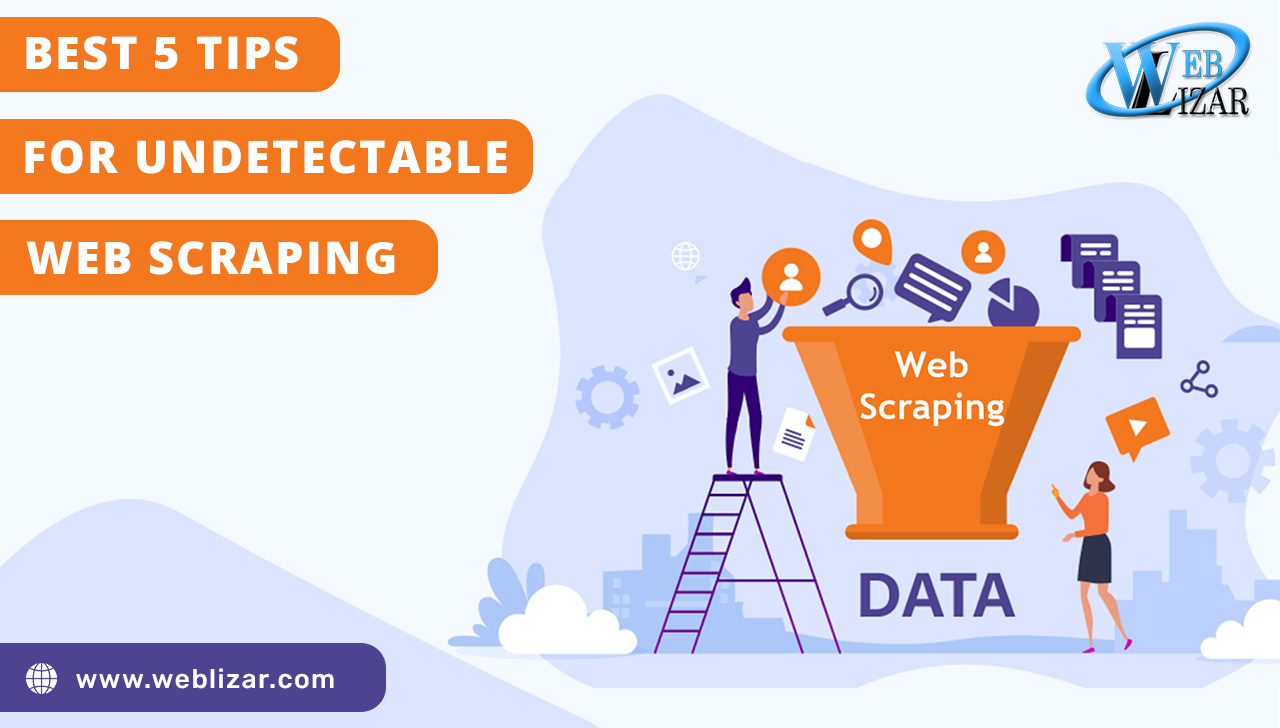Best 5 Tips for Undetectable Web Scraping 2024: Check Now

- Human Behavior , JS execution , Proxies , Web Scraping , Web Scraping Tools
- Human Behaviour, JS Execution, Proxies, Web Scraping, Web Scraping Tools
5 Tips for Undetectable Web Scraping: Web scraping or crawling is the automated process of extracting data from third-party websites. Sometimes websites offer their APIs for that, but very few do so, and even such websites may not allow scraping particular information that you need.
So building web scraping tools is often the only solution to get specific website data. Most websites do not welcome scraping their data. That’s why imitating a real visitor’s behavior is the number one priority when building a web scraper. There are actions you can take to cover yourself by emulating human behavior and therefore avoid blocking.
Also, Check Out: WordPress Platform is the most desirable CMS for web development:
5 Tips for Undetectable Web Scraping 2024
1. Captchas
Some websites will constantly ask you to confirm that you are a real human by filling in CAPTCHAs and switching proxy will not always help. In such cases, you’ll need to use CAPTCHAs solving services to provide people with resolving CAPTCHAs in real time.
But CAPCHAs solving is not a guarantee that the website won’t detect web scraping.
2. Proxies
It’s impossible to scrape big amounts of data without proxies. Proxies IPs need to be constantly monitored to discard ones that are not working anymore. It’s not recommended to use free proxies, as their IPs are probably already banned by most websites. Paid proxies are worth the money, especially since there’s a variety of good cheap ones on the market. Another option is to build your proxy network.
There are different types of proxies available that are good for various purposes. For scraping the data from websites rotating proxies is a great choice. For scraping mobile-first websites, like social media, using 3g and 4g proxies is a great idea.
People Also Read: Top 12 WordPress Plugins To Enhance Your Website
3. Request Pattern
In most cases, the following rule applies: the slower you scrape, the less chance you have to be discovered. Some websites collect users’ statistics on browser fingerprints. Location matters as well, so use proxies in the same country as websites you’re going to scrape. One of the best Tips for Undetectable Web Scraping.
4. Headless browsing and browser fingerprinting
One of the ways Google used to detect non-human behavior is by looking at the headers. They are easy to alter with cURL though, making requests look like they are made with a browser. But the website you’re scraping will check one more thing to make sure you’re using a real browser – JS execution.
Some websites embed a little snippet of JS on their web pages that “unlocks” the webpage. Headless browsers behave like real browsers, but with a great feature, allowing use them. The most popular option is Chrome Headless, which is easy but hard to scale the process later.
Every browser behaves differently. But the fact that most of these differences are well known allows us to predict its actions. Headless browsers make it indistinguishable from a real user’s browser in order to stop malware from doing that.
Also Read: What Is HTTP Header? Meaning and Definition 2024
Conclusion – Best Tips for Undetectable Web Scraping
These are the main points you need to know to understand how to trick websites, pretending you’re a real person using a real browser. To understand better web-scraping, make sure to check the rest of the articles and subscribe to our emails.



Leave a Reply